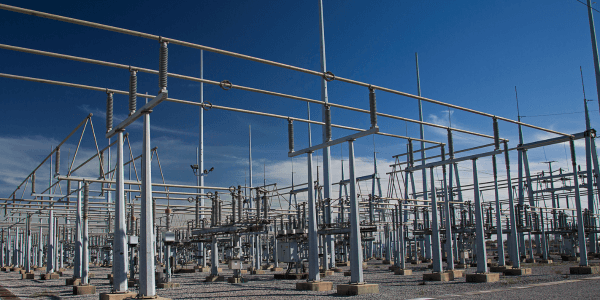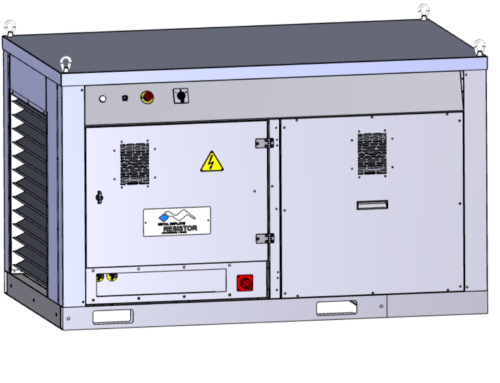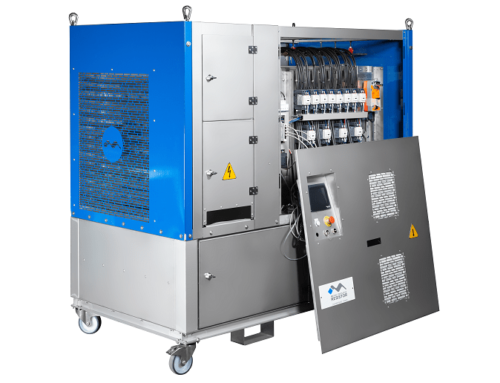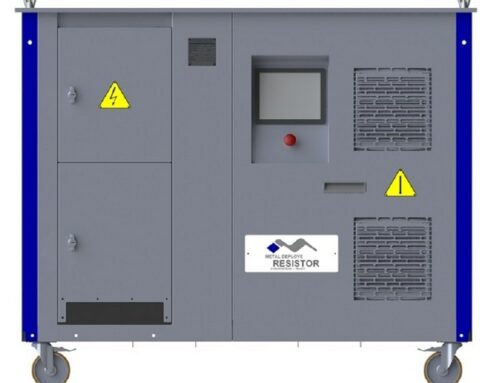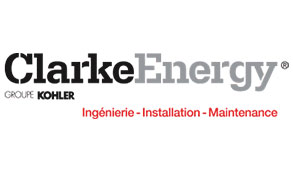The energy transition towards renewable sources such as solar and wind, while essential for a sustainable future, poses significant challenges to the stability of electrical grids. The intermittent nature of these energy sources can cause substantial frequency variations, thus threatening the continuity and quality of electricity supply.
In this context, load banks play a crucial role by simulating substantial electrical consumption and helping to stabilize the grid. What causes frequency variations? What is aFRR? How load banks contribute to electrical grid stability
Maintaining the balance between energy production and consumption
Renewable energy sources are inherently variable and unpredictable . Solar energy, for instance, depends on sunlight and temperature variations, which fluctuate with the weather. Wind energy, on the other hand, depends on wind speed and consistency. Meanwhile, electricity consumption is not constant. It varies according to the time of day, seasons, and human and industrial behaviors.
To ensure grid stability, it is crucial that supply (production) and demand (electricity consumption) are balanced at all times.
Electrical stability depends on the ability to maintain a constant frequency; thus, for proper functioning, electrical grids must maintain a frequency of 50 Hz or 60 Hz depending on the region. Frequency variations can cause significant imbalances in the electrical grid, increasing the risks of outages and disruptions.
A deviation greater than a certain threshold (estimated at +/- 0.2 Hz) can lead to a voltage drop or even a total power outage, thereby damaging equipment, increasing maintenance costs, and causing service interruptions.
Grid operators are responsible for maintaining this stable frequency by using balancing services, such as aFRR.
Electrical stability and aFFR
To quickly correct any frequency deviations in large electrical grids, each transmission system operator maintains a reserve of available power. This reserve is rapidly mobilized as needed to ensure grid balance.
The Automatic Frequency Restoration Reserve (aFRR) is an automated frequency balancing solution for the electrical grid, known as the secondary reserve. It is a mechanism that automatically adjusts electricity production and consumption with the goal of quickly restoring the grid frequency to its normal level (50 Hz) after a disturbance.
To restore grid frequency, the aFRR mobilizes a combination of resources capable of quickly adjusting their production, including load banks. These resources, maintained in reserve, are automatically activated by the grid when needed to restore frequency. Once the frequency is stabilized, these buffer resources are deactivated and return to their normal operating state.
Operation of load banks for electrical grid stability
First, load banks test the effectiveness of the aFRR by simulating demand variation scenarios. Through a remote communication system, Metal Deploye Resistor equipment adjusts the load (up or down) based on the instruction received from the facility’s SCADA system. This helps ensure that regulation systems can adequately respond in case of an actual imbalance.
Second, in grids with a high component of renewable energy, supply (and thus the amount of electricity available on the grid at any given time) can exceed demand. It is therefore crucial to have an intelligent supply and demand mechanism. Load banks come into play when an excessive amount of current is flowing through the grid. They simulate an electrical load (similar to that of a city or factory) and consume the available surplus to return to a balance between supply and demand. Once the grid is stabilized again, the load bank shuts off, awaiting the next peak.
By using load banks, it is possible to efficiently manage energy surpluses, thereby reducing frequency variations. They play a critical role in preventing outages and disruptions by ensuring that excess energy is used in a controlled and safe manner.
Metal Deploye Resistor’s load banks are particularly suited for applications in wind farms, solar installations, and industrial environments where grid stability is essential. Their robustness, corrosion resistance, and technical reliability make them a preferred choice for integrators and renewable energy producers who seek to ensure the continuity and efficiency of their electrical production.
Would you like to know more about our load banks? Contact us!

